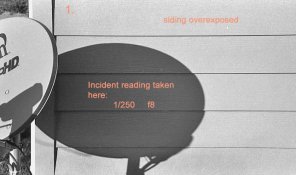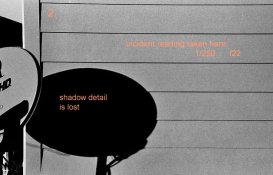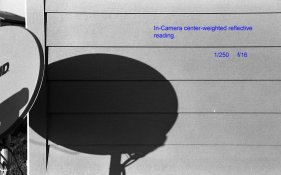"To measure incidental light any meter must be...pointed at the camera position."
I keep hearing this repeated everywhere I go. What is the logic behind it? Why would you point an incident meter at the camera if your aim is to measure the light falling on the subject?
The best argument I have got so far is that the instruction booklet for the meter says to do it.
Do we learn the ideal methods to photograph from our equipment instruction manuals? They are some of the most abridged, non-technical, rule-of-thumb-filled (and often poorly translated) pieces of photography literature out there.
Do you want to measure the light that is coming from your camera's position, or do you want to measure the light that is illuminating your subject? In some cases they may be the same light, however, this does not make the "at the camera" method a correct rule of thumb. It simply means that it works in situations in which the same light that is illuminating the back of the camera as is illuminating the subject.
The contrastier the light, the more important it becomes to meter the main light source itself to determine the proper exposure. On a flat day, "at the camera" will work...but don't think of it as "at the camera". Think of it as "at the source of light", which on a flat day is the same thing at "at the camera".
Take a studio situation with a 2:1 lighting ratio, assuming the subject is a person looking straight at the camera. You have three options:
1. Meter from the main-lit side of the face toward the main light.
2. Meter from the fill-lit/unlit side of the face toward the fill light (or no light).
3. Meter from the middle by pointing the meter straight ahead from the subject's nose (at the camera in this particular composition).
Work through this and figure out which method is "best" for giving you the exposure that will render the lighting as you crafted it to be in the studio. (Remember that you have used your skills to light the person in a 2:1 ratio.)
1. The exposure is made so that the main-lit side of the face is exposed normally. The fill/unlit side of the face falls into place perfectly in relation to the main-lit side, because it was lit to do so by you.
2. The exposure is made so that the fill-lit/unlit side of the face is metered, therefore this side is exposed normally. Because you intended this side of the face to be dark, the shot is overexposed.
3. Because your meter is taking half of its reading from the brighter side, and the other half from the darker side, it thinks that there is less light than there actually is coming from the main light, and therefore will tell you to overexpose your shot.
Change the lighting ratio to 1:1, think through it, and you will see that the problem goes away.
Change the lighting ratio to 4:1, think through it, and you will see that the problem is exacerbated, and you get a pretty poorly exposed shot (one stop over if metered at the camera) that is probably only usable if using negative film and doing some compensation in printing. At 8:1, it is even worse, and you get a very poorly exposed shot (1.5 stops over if metered at the camera), again, salvageable only if using negative film and then doing some print manipulation beyond the norm.
This is why I say that the contrastier the light on the subject, the more important it becomes to meter the main light source instead of the "down the middle" average, which is what you get by pointing the thing at the camera all the time.





 except with temperature and I've tested my stuff and tailored my own process to get results I like better.
except with temperature and I've tested my stuff and tailored my own process to get results I like better. 